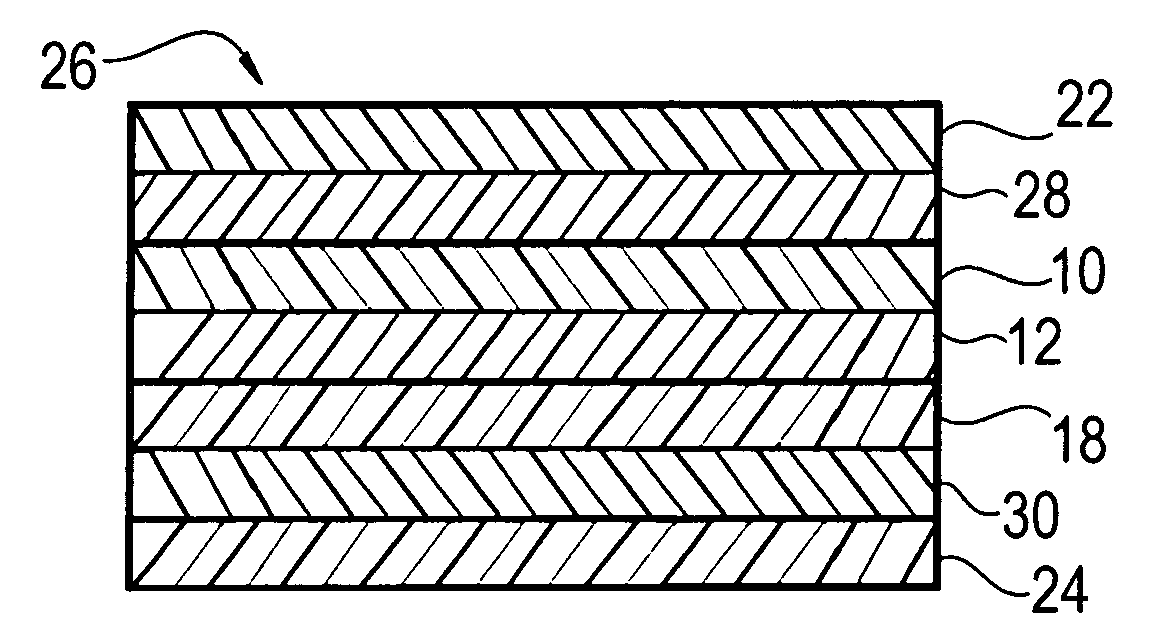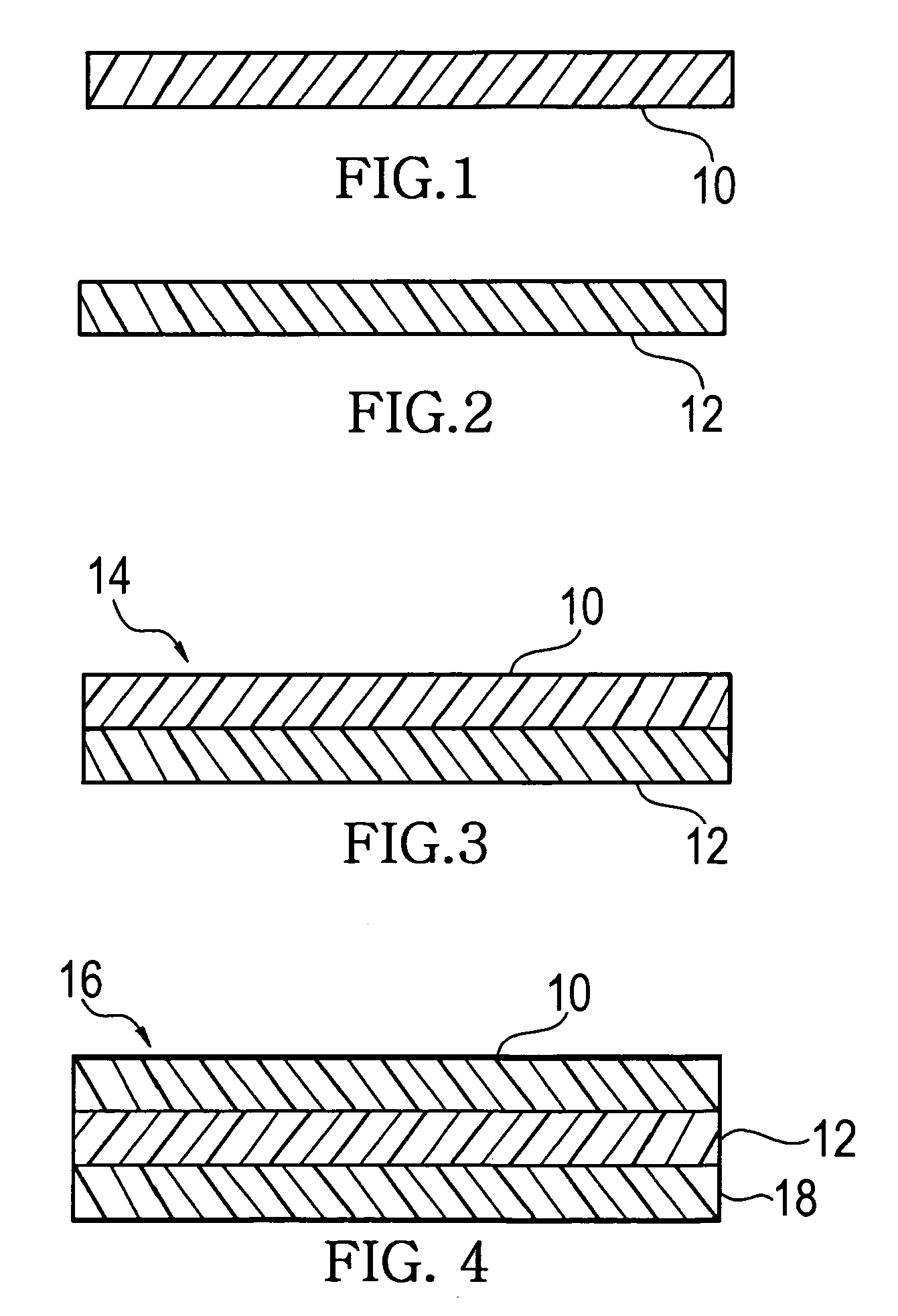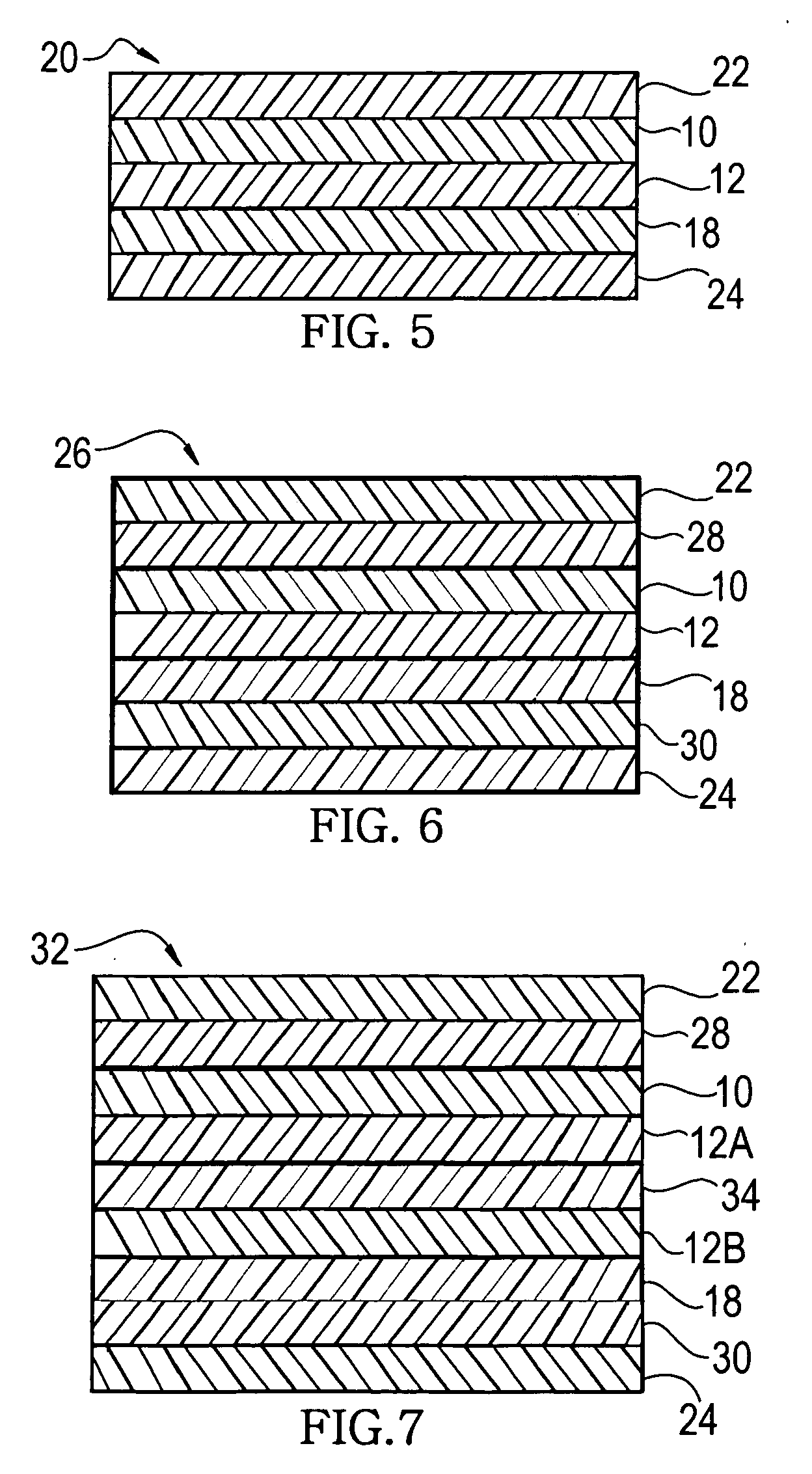Polymer compositions and films and method of making
a polymer composition and composition technology, applied in the field of polymer compositions and films, can solve the problems of deterioration of oxygen barrier properties of oriented nylon layers, difficulty in processing nylon resins, and high cost of nylon resins in general, and achieve the effect of higher melting temperature nylon and lower melting temperature nylon
- Summary
- Abstract
- Description
- Claims
- Application Information
AI Technical Summary
Benefits of technology
Problems solved by technology
Method used
Image
Examples
examples
[0222] In the following examples, multiple layer films were produced using 5-layer air cooled tubular coextrusion apparatus and 7-layer water quench tubular extrusion apparatus.
[0223] The following parameters represent the general processing conditions used in making the films of the examples.
[0224] Extrusion temperature profiles. [0225] EVA layers: Extruder Temperatures: 150-190° C., Die Temperatures: 190-210° C. [0226] Tie layers: Extruder Temperatures: 160-225° C., Die Temperatures: 205-225° C. [0227] Nylon layers: Extruder Temperatures: 200-240° C., Die Temperatures: 230-250° C. [0228] EVOH layer: Extruder Temperatures: 170-230° C., Die Temperatures: 210-230° C.
[0229] Air Cooling temperature, incident air: 16-22° C.
[0230] Water Cooling temperature, water bath: 20-25° C.
[0231] Reheating temperature of primary tube, 85-100C.
[0232] Primary tube thickness: 260-600 microns.
[0233] Final film thickness: 40-65 microns.
[0234] The examples are generally represented as individual c...
PUM
| Property | Measurement | Unit |
|---|---|---|
| shrink capacity | aaaaa | aaaaa |
| shrink capacity | aaaaa | aaaaa |
| shrink capacity | aaaaa | aaaaa |
Abstract
Description
Claims
Application Information
 Login to View More
Login to View More - R&D
- Intellectual Property
- Life Sciences
- Materials
- Tech Scout
- Unparalleled Data Quality
- Higher Quality Content
- 60% Fewer Hallucinations
Browse by: Latest US Patents, China's latest patents, Technical Efficacy Thesaurus, Application Domain, Technology Topic, Popular Technical Reports.
© 2025 PatSnap. All rights reserved.Legal|Privacy policy|Modern Slavery Act Transparency Statement|Sitemap|About US| Contact US: help@patsnap.com



